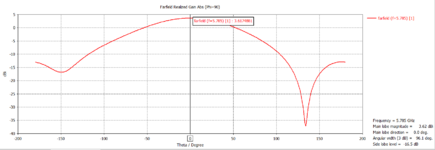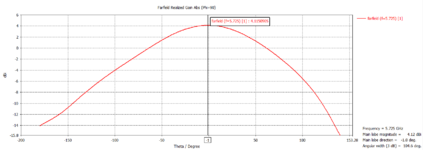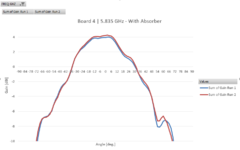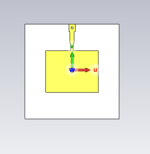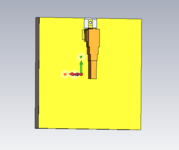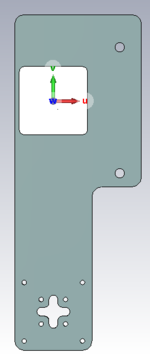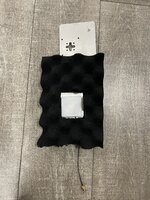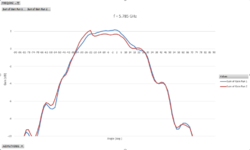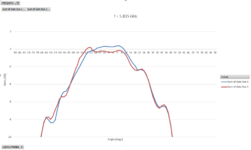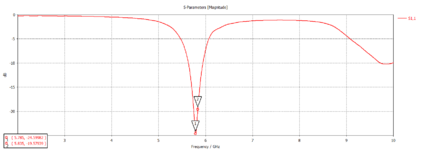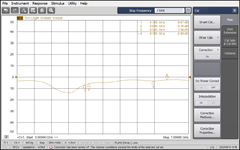denizduran
Member level 2
I have a simple 5 GHz patch antenna in my hand. When I add the metal back plate that is going to help mount the antenna to the radio into my simulations, the gain increases noticeably. I have attached the gain and return loss results for just the patch simulated alone and when simulated including the metal back plate. Can anyone help me understand what's going on? I also measured the metal back plate + antenna in the anechoic chamber and the results do not match with the simulations, there is no such gain increase with the metal back plate. I have also attached the anechoic chamber measurements.
First file: patch antenna simulation
Second file: patch antenna + metallic back plate simulation
Third File: patch antenna + metallic back plate anechoic chamber radiation pattern measurement
Please help!
First file: patch antenna simulation
Second file: patch antenna + metallic back plate simulation
Third File: patch antenna + metallic back plate anechoic chamber radiation pattern measurement
Please help!
